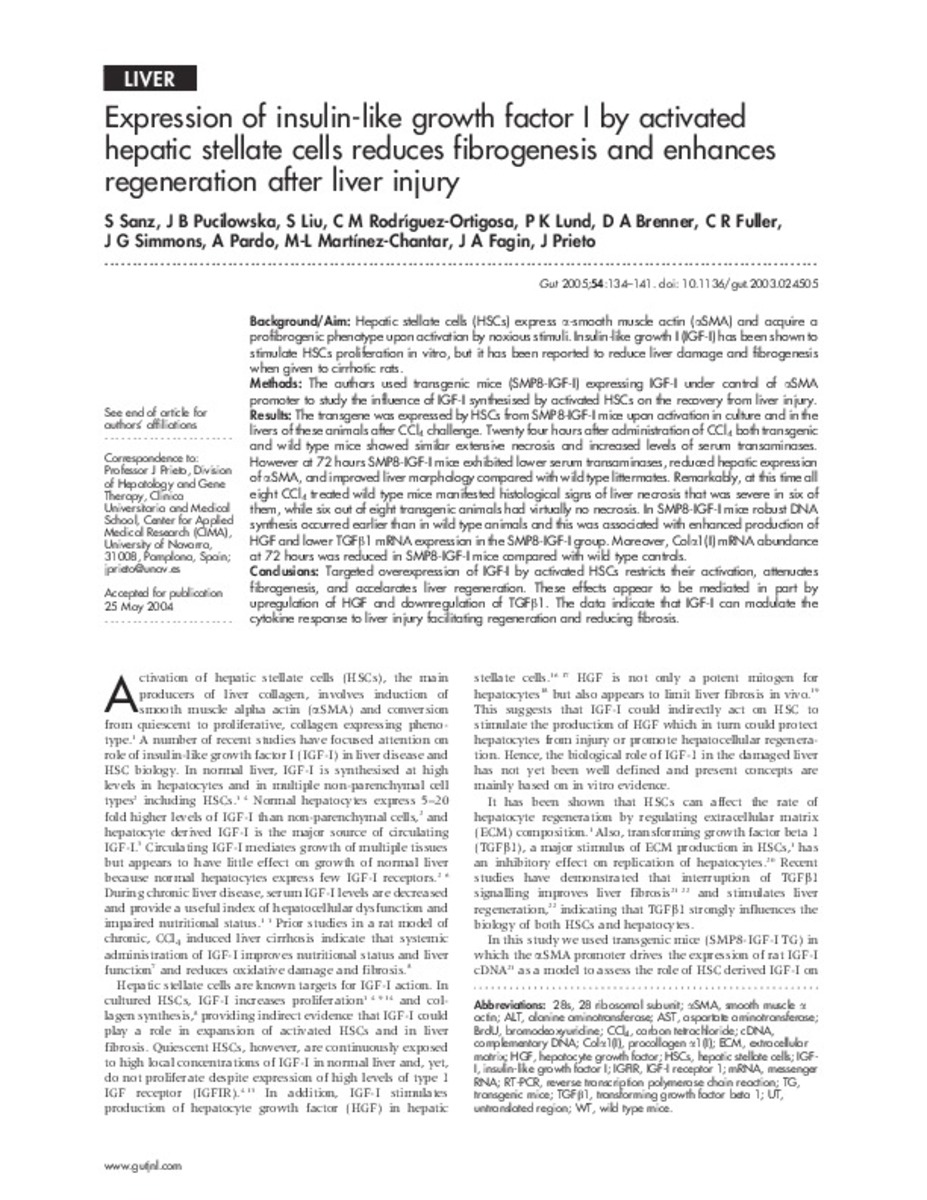Expression of insulin-like growth factor I by activated hepatic stellate cells reduces fibrogenesis and enhances regeneration after liver injury
Keywords:
Adipocytes/metabolism
Insulin-Like Growth Factor I/physiology
Liver Cirrhosis, Experimental/physiopathology
Publisher:
BMJ Publishing Group
Citation:
Sanz S, Pucilowska JB, Liu S, Rodriguez-Ortigosa CM, Lund PK, Brenner DA, et al. Expression of insulin-like growth factor I by activated hepatic stellate cells reduces fibrogenesis and enhances regeneration after liver injury. Gut 2005 Jan;54(1):134-141.
Statistics and impact
0 citas en

0 citas en

Items in Dadun are protected by copyright, with all rights reserved, unless otherwise indicated.







